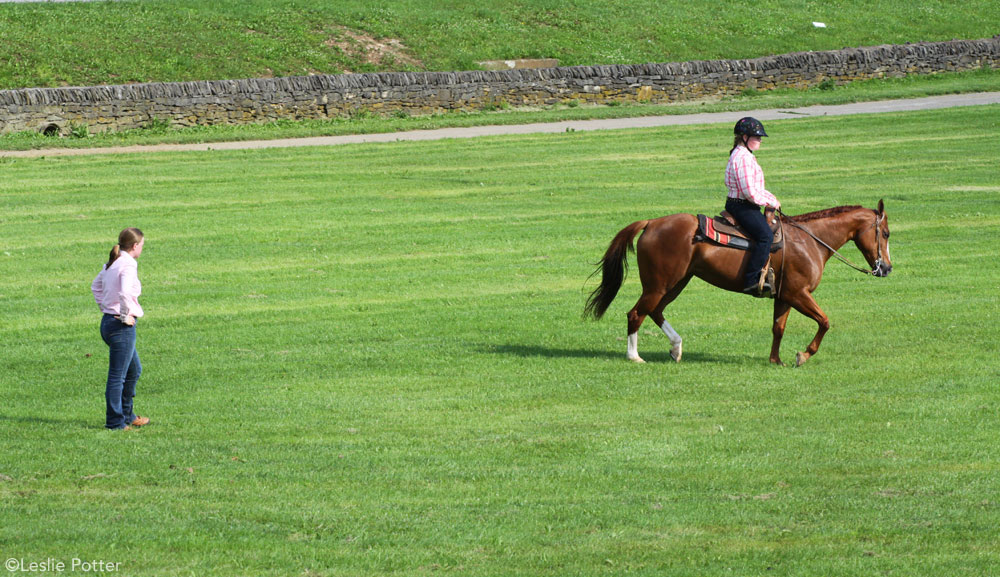
“The whole concept was ‘cowgirl up,’” recalls Christy Landwehr, chief executive officer for the Certified Horsemanship Association, an organization that certifies horseback riding instructors. “Today it’s all about safety and matching the trainer with what the rider wants to accomplish.”
According to Landwehr, most student riders begin working with a trainer to learn horseback riding basics. As students advance, they may want to learn the specifics of a certain discipline and ride through its competitive ranks.
“That’s when they generally think about finding a new trainer,” Landwehr says.
But knowing when to switch trainers is not always obvious. Here’s how to tell it’s time for a change.
The Growth Factor
Riders changing disciplines, advancing levels or simply finding that their trainer has ceased to help them reach other sport-related goals should consider a switch.
“For example, if you want to be safe and confident on trail but you never leave the arena, you may need to look for a trainer who is not so focused on training for horse shows,” Landwehr says. “Likewise, if you’re going to horse shows and not doing as well as you’d like, it could be time to change trainers.”
A trainer change may also be necessary whenever a student trades one discipline for another or move up-or down–through competition rankings.
“If you’re going from one dressage level to the next one, you need a trainer who can help you get to that next level,” says Clarissa Cupolo, whose students range from teenagers to women returning to equestrian sports after a long layoff. “Likewise you don’t want a trainer who specializes in English equitation if you want to show in western pleasure classes.”
Nature vs. Nurture
Under the best circumstances, the best student-trainer relationships occur when the trainer’s teaching style matches the way a rider learns. In most cases, the match boils down to personalities. So when styles don’t meld, it’s time to look elsewhere.
“How is the instructor – is she a yeller?” Landwehr says. “Do you need an instructor to be calm and patient, or do you need one that is more like a football coach?”
Safety first
Human safety should always be priority one for trainers. Riders who feel that their safety has been compromised or even it has become a concern should move on to a new trainer.
“It’s all about safety,” Cupolo says. “If a trainer wants you to perform a skill or move up to a level you are not comfortable with, the risk factor is too high for you and it’s time to find a new trainer.”
Also, the way a trainer responds to a a major incident, such as a fall, rider fear or lack of confidence can also lead a student to seek a new instructor.
“Some older riders are fearful because they know that if hey fall, they won’t bounce as well as younger riders do,” Landwehr says. “Some younger riders are fearful after a fall, but you have to be able to show the student how to ride though it. I was not a good instructor for fearful riders until I had my children and became one myself.”
Critic or Bully
Riders hire instructors to acquire new skills, polish up old ones and get useful input from their trainer. But when a trainer’s criticism goes from constructive to outright bullying, it’s time for a change.
“People always prefer constructive criticism,” Cupolo says. “The trainer is not a good match for you if you’re feeling pushed or belittled.”
Chemically Treated
“Many trainers are also serious competitors who like that adrenaline rush and are sometimes more prone to substance abuse,” Cupolo says. “While under the influence they can make decisions that are not good for students.”
Early on, riders may not know if their trainers are substance abusers, but instructors under the influence can compromise student and equine safety. Find a new trainer before that happens.
Making a Change
When it is time to find a new trainer, riders should take the time to do some research. Visit the trainer’s facility and watch how they connect – or fail to connect – with their students.
“And don’t do it just once, do it a couple of times,” Cupolo says. “Also, notice how they treat their lesson horses–are they well cared for or overworked?”
Next ask the trainer how long he or she has been teaching student riders, and if they specialize in one discipline or specific age group.
“You want to know how long they have been doing this,” Landwehr says. “Is this someone who has been teaching for 40 years or someone who has a horse and has decided to teach?”
Finally, take a lesson or two. If the trainer-student match is not good, move on.
Ideally, riders hope to find trainers who can take from the basics to competitive success. But according to Landwehr, there’s something else to consider as well.
“Ultimately, it’s not complicated,” Landwehr says, “Effective instructors make their students feel as though the journey is worth the effort.”
Patrice Bucciarelli is a freelance writer based in Florida.





